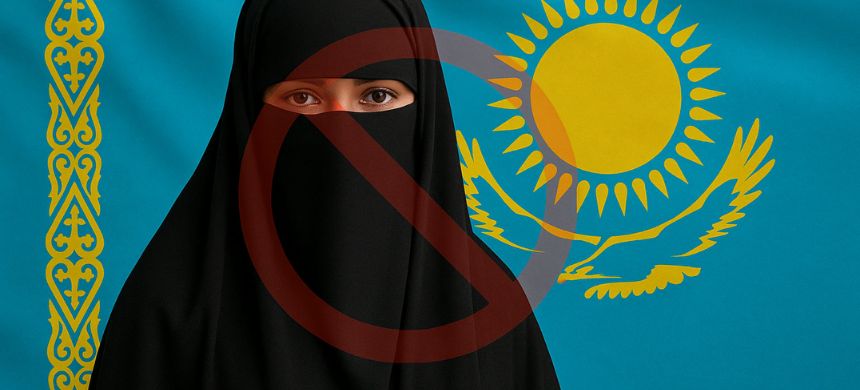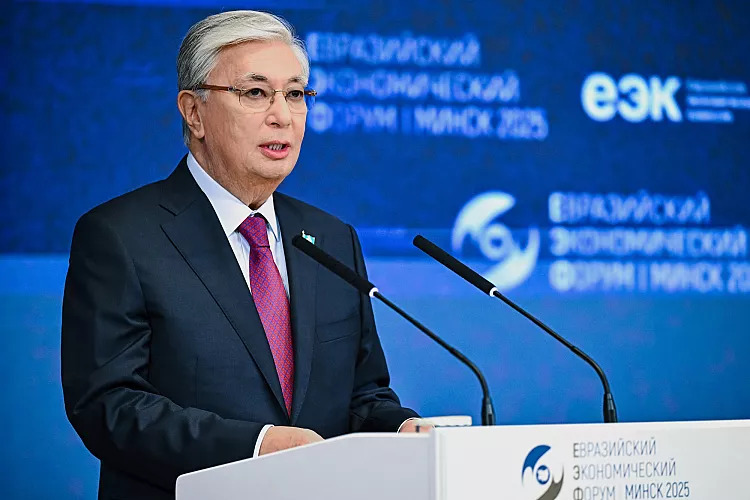Kazakhstan’s Face Veil Ban Sparks Concern Among Muslims Over Religious Freedom

Kazakhstan has officially joined the growing list of Central Asian countries restricting Islamic face coverings, following the signing of a controversial law by President Kassym Jomart Tokayev.
The new legislation prohibits people from wearing any clothing in public that obscures the face and impedes facial recognition, directly affecting garments like the niqab, a face veil worn by some Muslim women that leaves only the eyes visible.
While the law does not explicitly mention religious dress, its implications are clear. Women wearing the niqab or burqa will now be barred from appearing in public in these garments.
Exceptions have been made for specific circumstances, including medical conditions, extreme weather, and participation in professional duties or cultural events. The hijab, which covers the head but not the face, remains allowed.
“The law states, ‘Wearing items of clothing in public places that impede facial recognition is prohibited,’” reads the amendment, “except in cases where this is necessary to comply with the laws of the Republic of Kazakhstan, fulfill official duties, or for medical, civil defense, weather-related or event-specific purposes.”
President Tokayev defended the move, framing it as both a security measure and a cultural initiative. “Rather than wearing face-concealing black robes, it's much better to wear clothes in the national style,” he said, arguing that “our national clothes vividly emphasise our ethnic identity, so we need to popularise them comprehensively.”
The decision has sparked backlash among Kazakhstan’s Muslim majority, who make up nearly 70% of the population. Critics view the move as an infringement on religious freedom and personal choice, particularly targeting Muslim women.
The controversy mirrors tensions seen in the past. In 2023, Kazakhstan banned the hijab in schools, leading to the withdrawal of at least 150 girls from educational institutions. The policy drew widespread protest and highlighted the ongoing struggle between secular governance and religious expression.
President Tokayev addressed the hijab issue at the time by reaffirming Kazakhstan’s secular identity: “This principle must be strictly observed in all spheres, including education.”
Despite reassurances, the debate over Islamic dress remains unresolved. Niqabs and long black robes have become more common on Kazakhstan’s streets in recent years, reflecting shifting religious identities.
The government, however, maintains that such garments are not historically part of Kazakh culture and are instead seen as foreign imports from Arab countries.
Senator Nauryzbay Baikadamov, speaking earlier in June, clarified that the law is part of broader amendments to the Law “On the Prevention of Offenses.”
He stated that the aim is “to enhance public safety and assist in crime prevention.” The legislation also includes bans on items such as balaclavas, but places the most pressure on visibly Muslim women.
Religious scholar Asylbek Izbaev offered a more nuanced view: “It is not so important what a girl wears on her head as what she thinks,” emphasizing that the substance of a person’s beliefs cannot be judged solely by their clothing.
This policy aligns with a broader regional trend. Kyrgyzstan enacted a similar ban earlier this year and is now enforcing it through street patrols. Uzbekistan imposes fines exceeding $250 for women who wear burqas or veils in public, citing security and secularism. Tajikistan passed a 2023 law banning clothing considered contrary to national culture. These countries, like Kazakhstan, point to public safety and cultural preservation as justifications.
The issue is not unique to Central Asia. European countries like France, Austria, Denmark, and Switzerland also enforce face-covering bans in public spaces, often under the banner of secularism or counter extremism. Yet, for Muslims around the world, such laws consistently raise questions about religious discrimination and the erosion of civil liberties.




